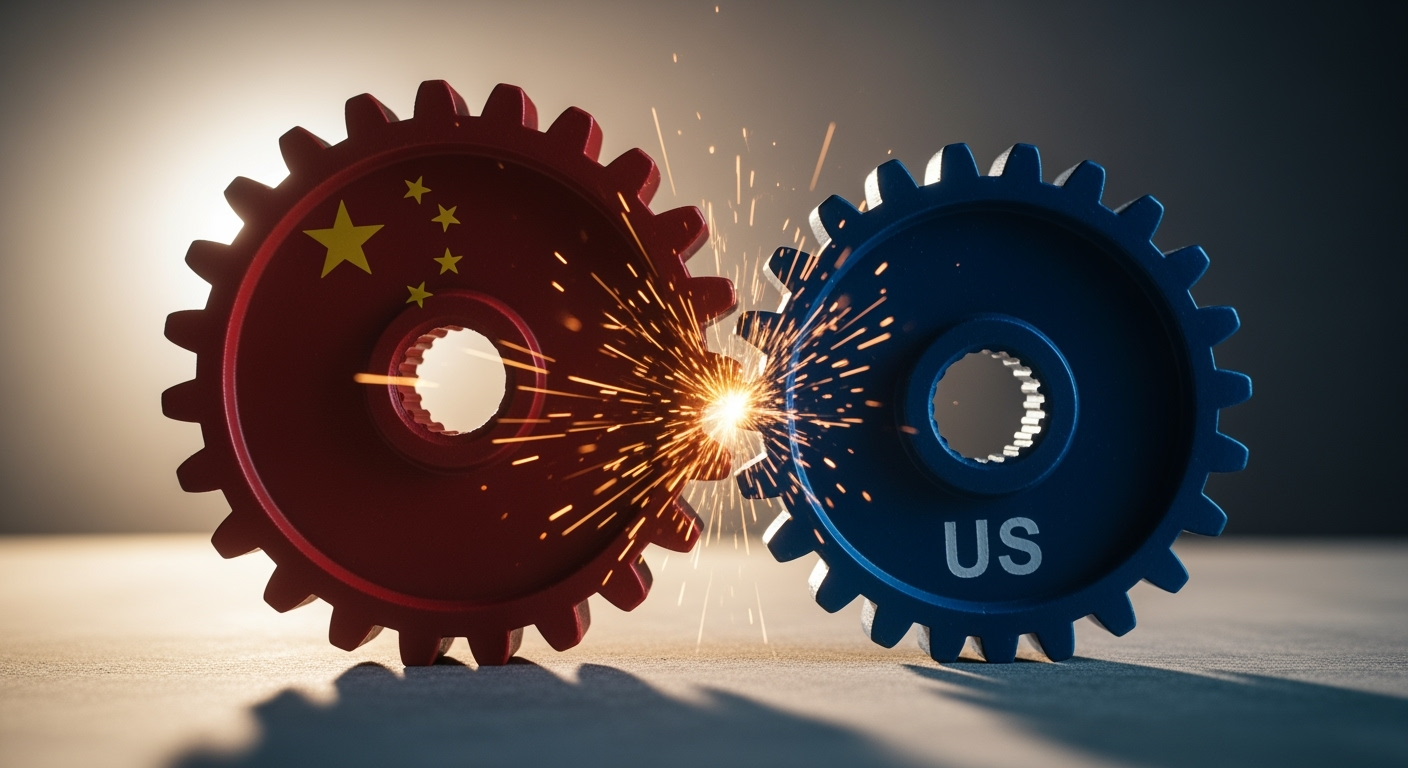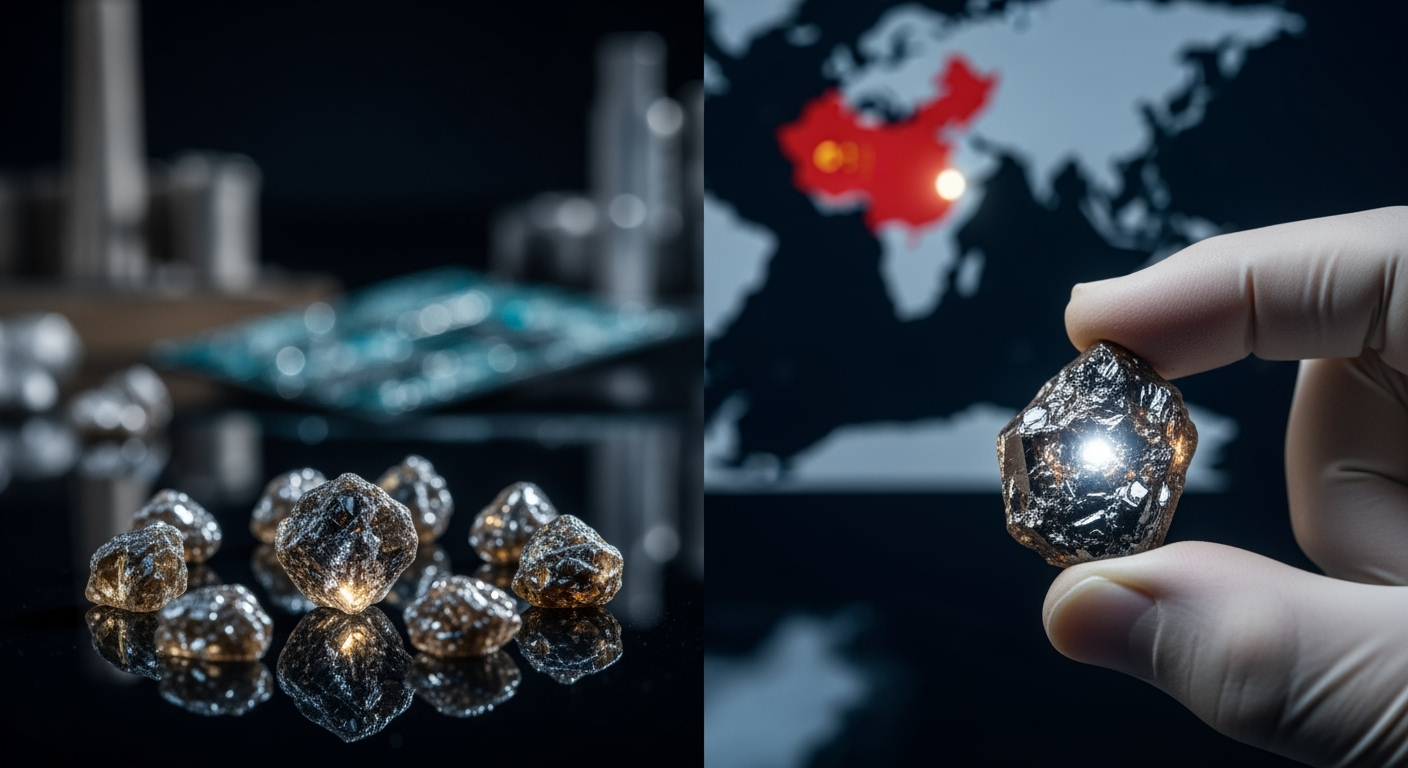Related Articles

China's Ambitious Pursuit: Challenging America's AI Dominance




Beijing's deepening control over the global rare earth supply chain is increasingly seen as a potent strategic weapon, threatening critical industries worldwide and fueling geopolitical tensions. Recent actions by China to expand export restrictions on these vital minerals, essential for everything from advanced military hardware to green energy technologies, underscore a deliberate strategy to leverage its near-monopoly for national interests, forcing nations to confront profound vulnerabilities in their technological and defense supply lines.
Rare earth elements (REEs) are a group of 17 chemically similar metallic elements that, despite their name, are not particularly scarce in the Earth's crust but are challenging and costly to extract and refine. These elements possess unique magnetic, optical, and electronic properties that make them irreplaceable in myriad modern applications. Neodymium and dysprosium, for instance, are critical for high-performance magnets used in electric vehicles (EVs), wind turbines, and advanced electronics. Lanthanum is vital for hybrid car batteries and camera lenses, while europium and terbium are crucial for LED screens and lighting.
Beyond consumer electronics and green energy, rare earths are indispensable for national security and defense. They are foundational components in advanced radar and sonar systems, precision-guided munitions, night vision devices, missile guidance systems, and stealth technology. The F-35 fighter jet, radio batteries, and man-portable air-defense systems (MANPADS) all rely on REEs. These minerals enhance laser weapons, counter-IED technologies, and high-resolution targeting systems, ensuring greater accuracy, power efficiency, and operational effectiveness in military applications. Without a secure supply of these elements, modern militaries would face significant technological disadvantages, making their availability a matter of critical strategic importance.
China's overwhelming dominance in the rare earth industry is not an accident but the culmination of decades of deliberate policy and strategic investment. Beginning in the 1980s, the country systematically built its rare earth capabilities, leveraging abundant domestic reserves, lower labor costs, and less stringent environmental regulations. The strategic vision was encapsulated in Deng Xiaoping's famous 1992 remark: "The Middle East has oil, China has rare earths."
Beijing implemented policies designed to incentivize rare earth exports, such as tax rebates, and gradually restricted foreign involvement in mining while promoting domestic value-added processing. By the 2000s, China had achieved near-complete domination of rare earth production, often offering these materials at prices that made it difficult for other nations to compete, leading to the closure of mines in countries like the United States.
Today, China accounts for approximately 60-70% of global rare earth mining output. Its dominance is even more pronounced in the critical processing and refining stages, controlling an estimated 85-90% of global capacity, and up to 99% for heavy rare earth elements. This vertical integration extends to the production of high-performance rare earth magnets, with China responsible for over 90% of the world's supply. This comprehensive control over the entire value chain, from raw material extraction to advanced manufacturing, grants China unparalleled leverage over global technology supply chains and national security interests.
China has repeatedly demonstrated its willingness to weaponize its rare earth dominance during geopolitical disputes. A notable instance occurred in 2010 when Beijing temporarily halted rare earth exports to Japan amidst a territorial disagreement, triggering significant price spikes and a global scramble for alternative supplies. This event served as a stark warning to the international community about the fragility of global supply chains.
More recently, China has escalated its use of export controls. In April 2025, the Ministry of Commerce imposed new licensing requirements on seven specific rare earth elements—samarium, gadolinium, terbium, dysprosium, lutetium, scandium, and yttrium—along with their associated magnets. These measures, seen partly as a response to U.S. tariffs, immediately caused global supply chain disruptions. Automakers, for example, faced critical shortages for EV motors, leading some manufacturers to pause production lines.
Further tightening its grip, Beijing announced expanded restrictions in October 2025, specifically targeting overseas defense and semiconductor users. The new rules encompass processing technology for rare earths and magnets, as well as equipment for recycling these materials. Significantly, applications for export licenses related to advanced semiconductors (14-nanometer chips or more advanced, memory chips with 256 layers or more, and associated production equipment and R&D) will be approved only on a case-by-case basis, while licenses for overseas defense users will not be granted. This strategic move mirrors U.S. export restrictions on semiconductor-related products, effectively expanding China's bargaining chips in trade negotiations and solidifying its leverage over critical global industries.
The tightening of China's rare earth export controls exposes profound vulnerabilities in global supply chains, particularly for the United States and Europe. The U.S. imports over 80% of its rare earth elements, primarily from China, while the European Union relies on China for 98% of its rare earth magnets. This over-reliance poses significant economic and national security risks, creating bottlenecks in industries crucial for technological innovation and military readiness.
In response to China's assertive actions, numerous countries are accelerating efforts to diversify their rare earth supply chains. The U.S. has revitalized its Mountain Pass mine in California, which now contributes 15% of global rare earth production. Australia's Lynas Rare Earths has emerged as a key non-Chinese producer, with processing facilities in Malaysia and Australia, and recently began producing dysprosium oxide, a heavy rare earth. Projects are also underway in Greenland, Kazakhstan, and other regions, with investments from the U.S. Export-Import Bank and strategic deals like the U.S.-Ukraine minerals agreement.
However, establishing independent and competitive rare earth supply chains presents significant challenges. The high capital costs of developing new mines, coupled with the technical complexity and environmental impact of rare earth processing, make it a daunting endeavor. China's decades of investment have created a robust, vertically integrated industry with a substantial cost advantage that is difficult to replicate in the short term. Recycling, while a promising avenue, currently accounts for only about 1% of the global rare earth supply. Despite these efforts, analysts predict that China will maintain significant rare earth market dominance through at least 2035, indicating a long and arduous road for countries seeking to reduce their dependence.
China's strategic weaponization of rare earth elements has fundamentally reshaped the landscape of global trade and national security. By leveraging its dominant position in mining, processing, and magnet production, Beijing can exert considerable influence over industries vital to technological advancement and military power. The recent tightening of export controls, explicitly targeting defense and advanced semiconductor sectors, underscores China's resolve to use these critical minerals as a potent tool in an increasingly fragmented global order.
While international efforts to diversify supply chains are gaining momentum, the challenges of overcoming China's entrenched dominance are substantial. The high costs, technical hurdles, and environmental considerations associated with establishing alternative production and processing capabilities mean that the world will likely remain significantly reliant on China for the foreseeable future. This ongoing dynamic ensures that rare earths will continue to be a central flashpoint in geopolitical competition, compelling nations to navigate complex choices between economic interdependence and strategic autonomy to secure their technological and defense futures.